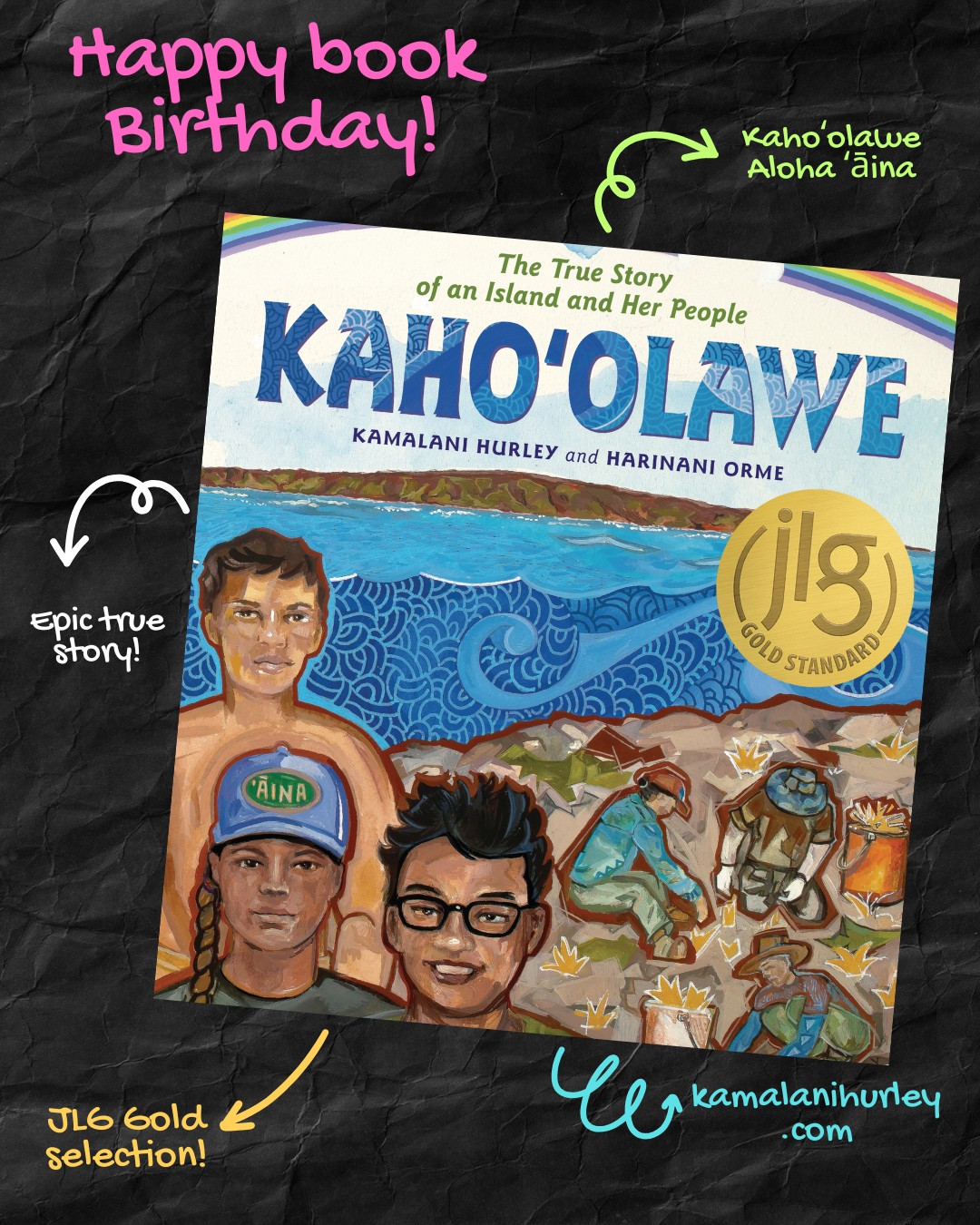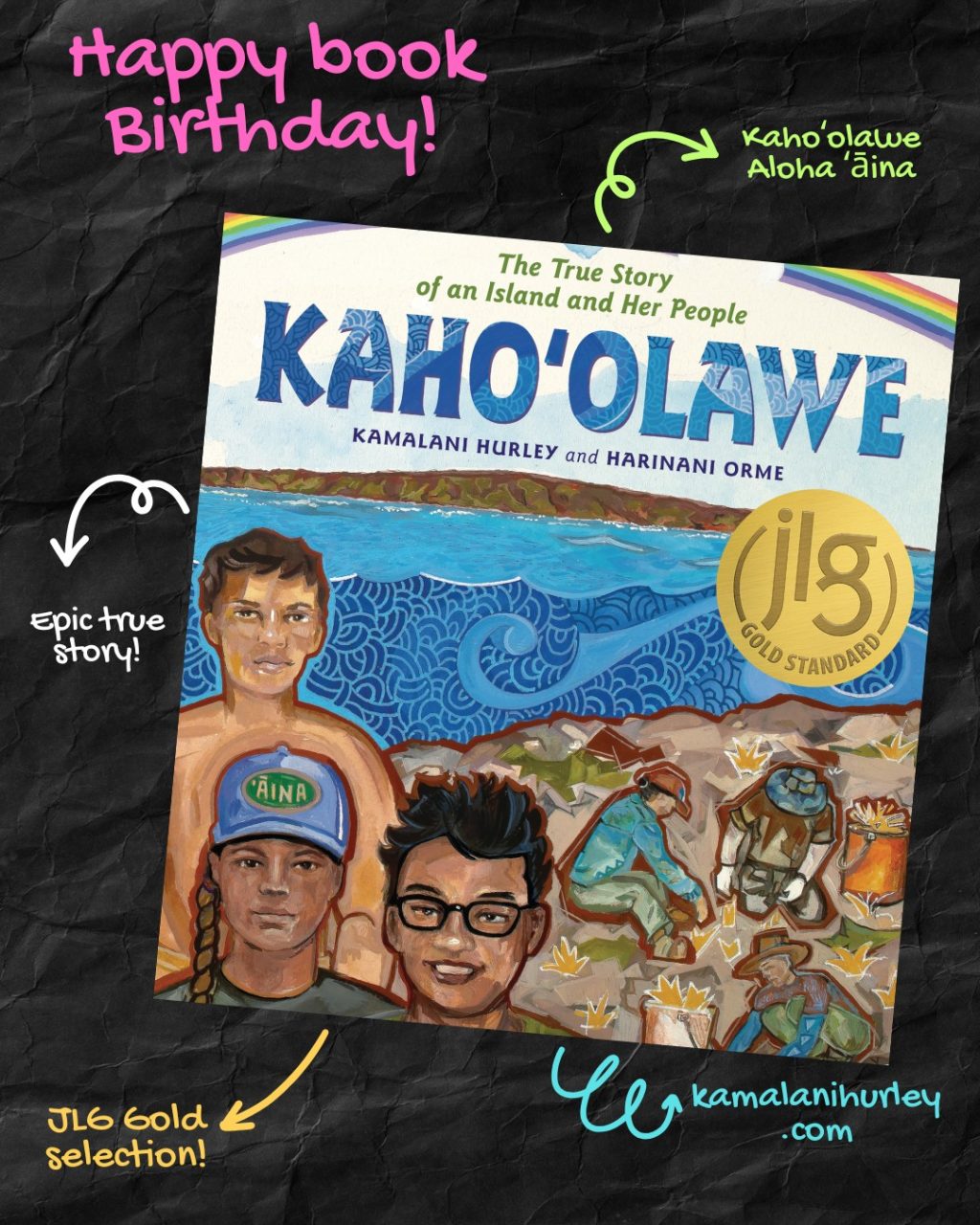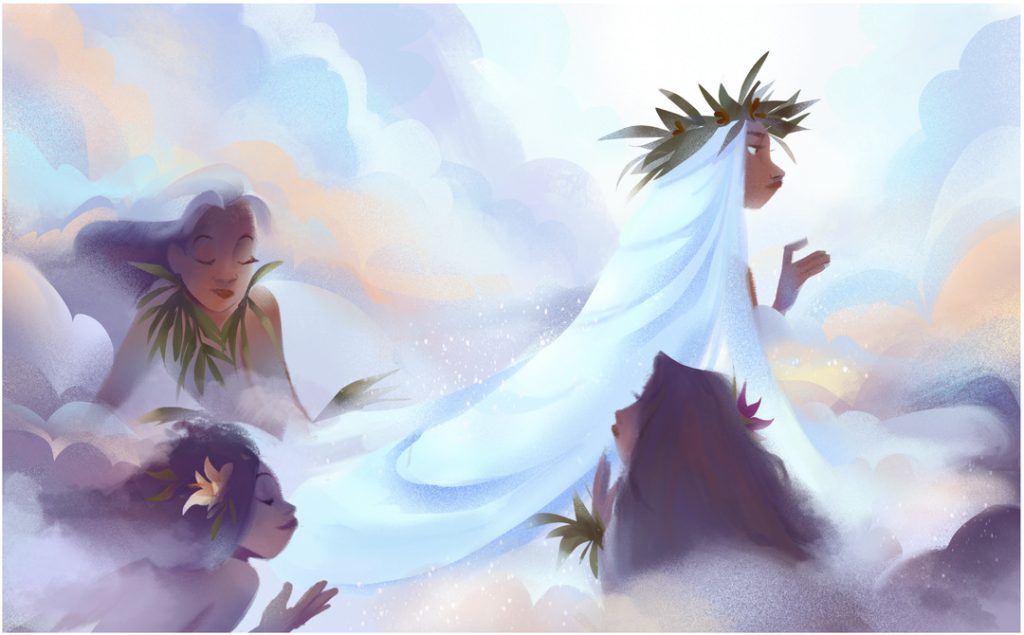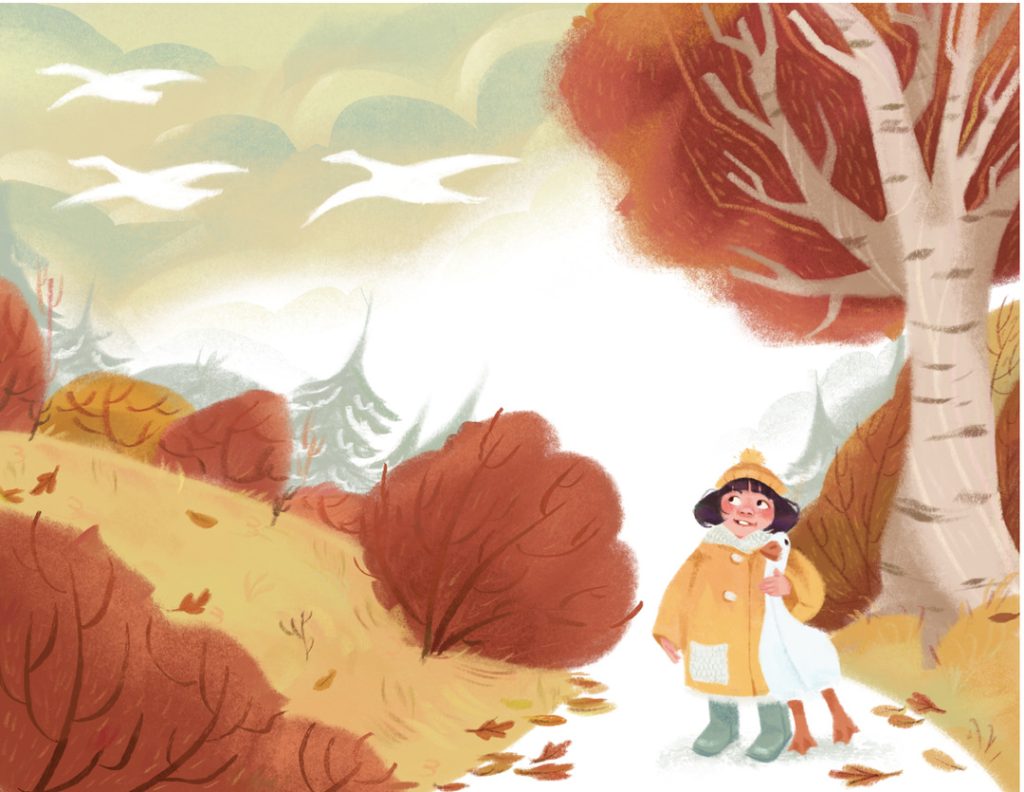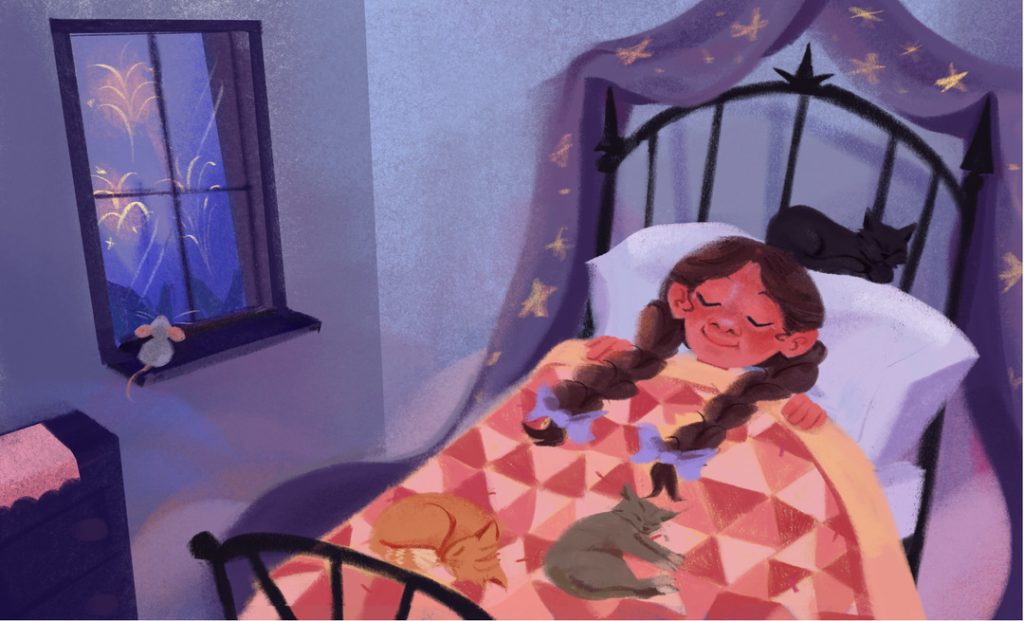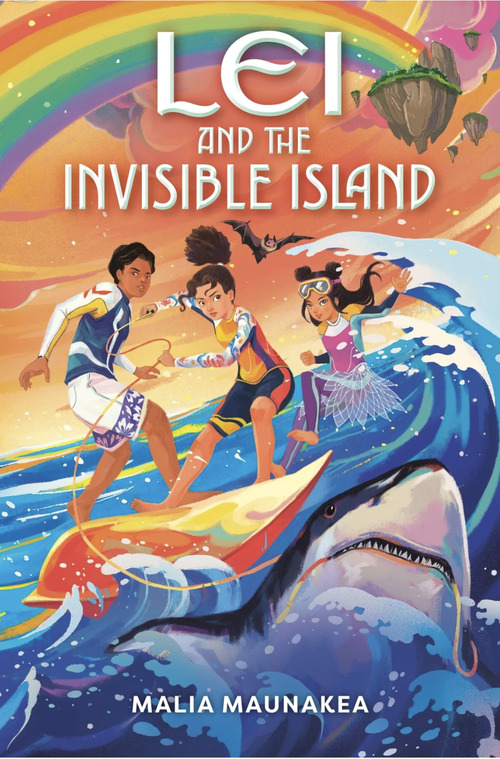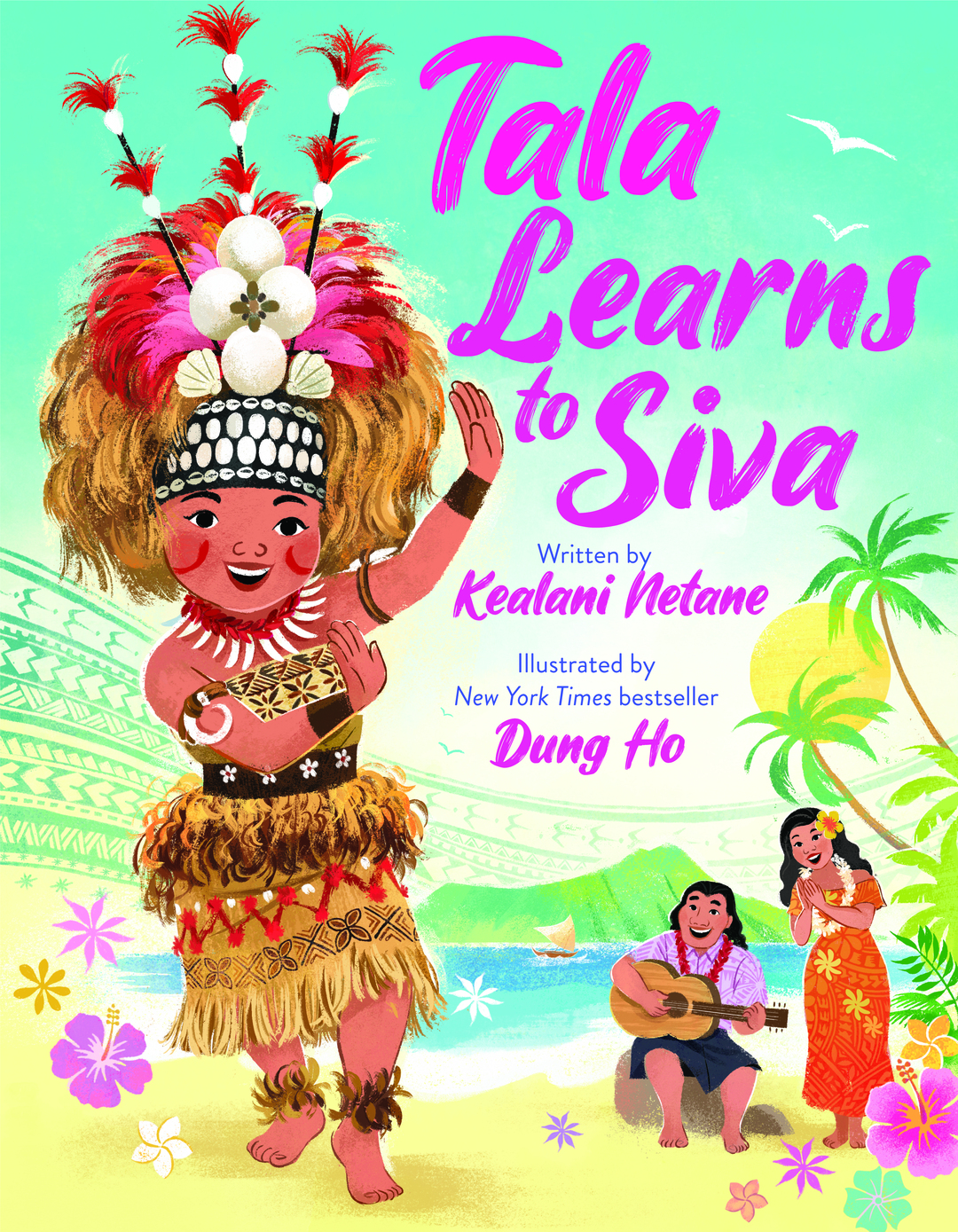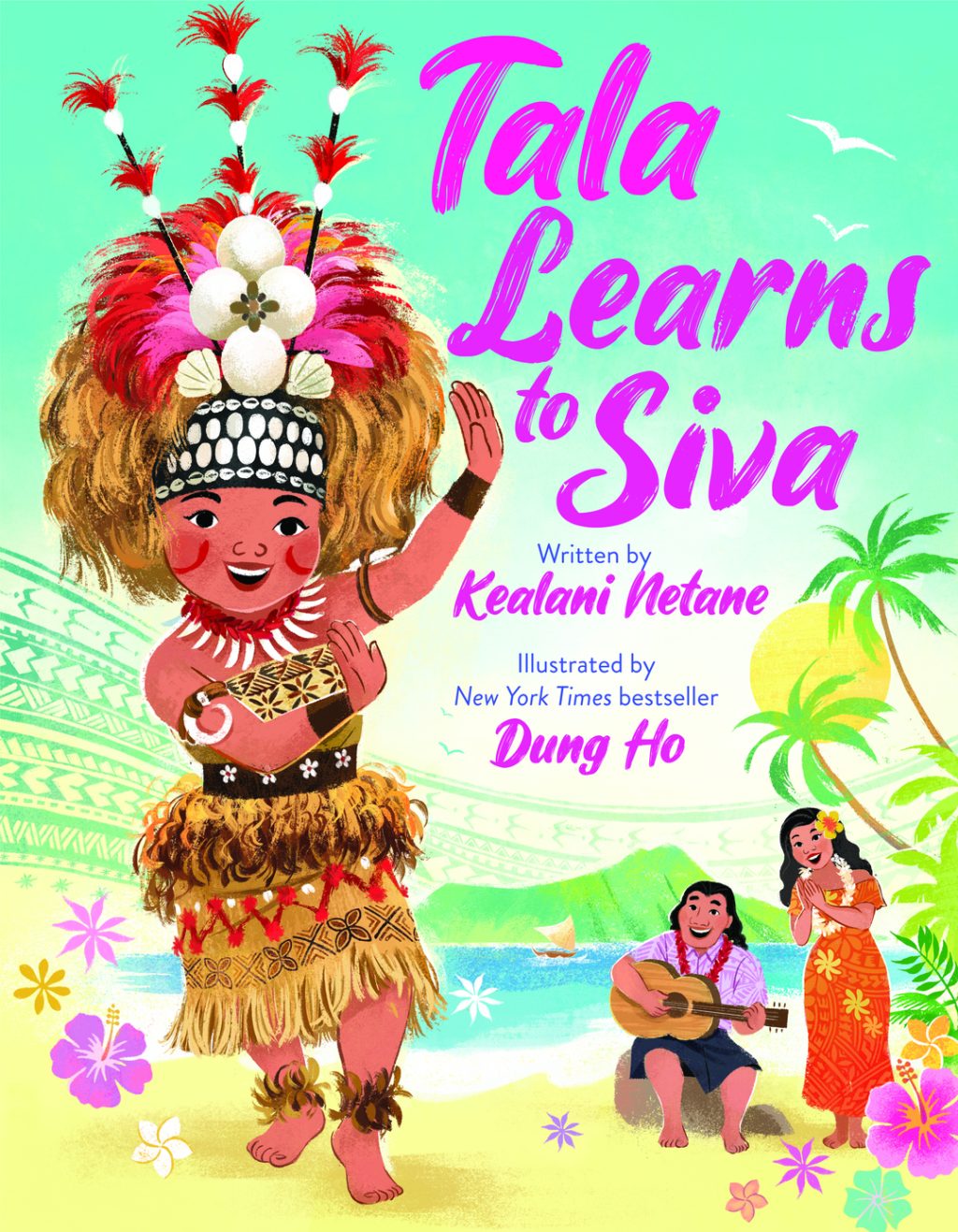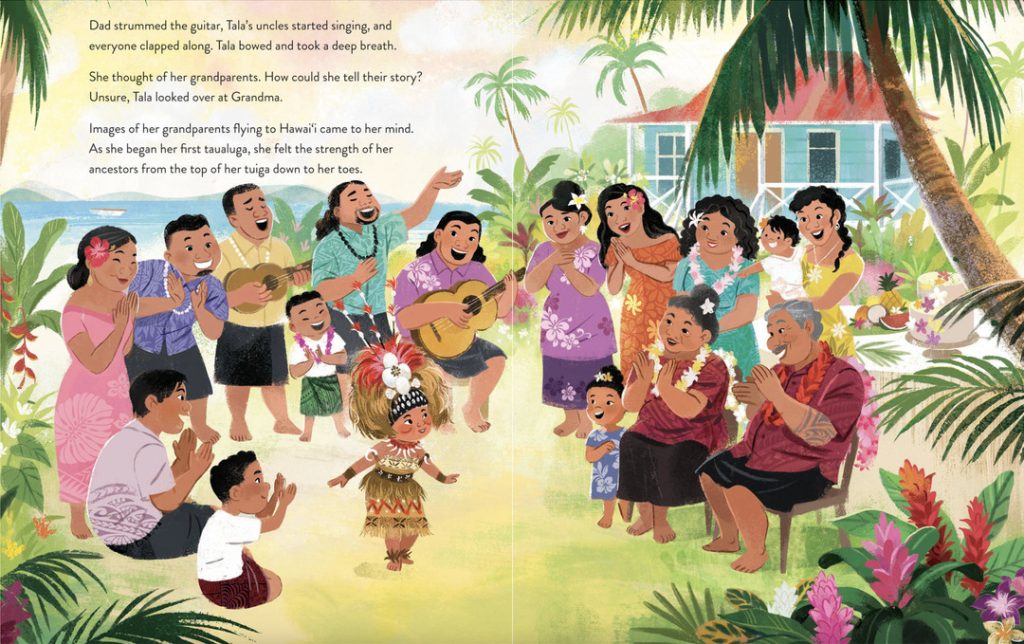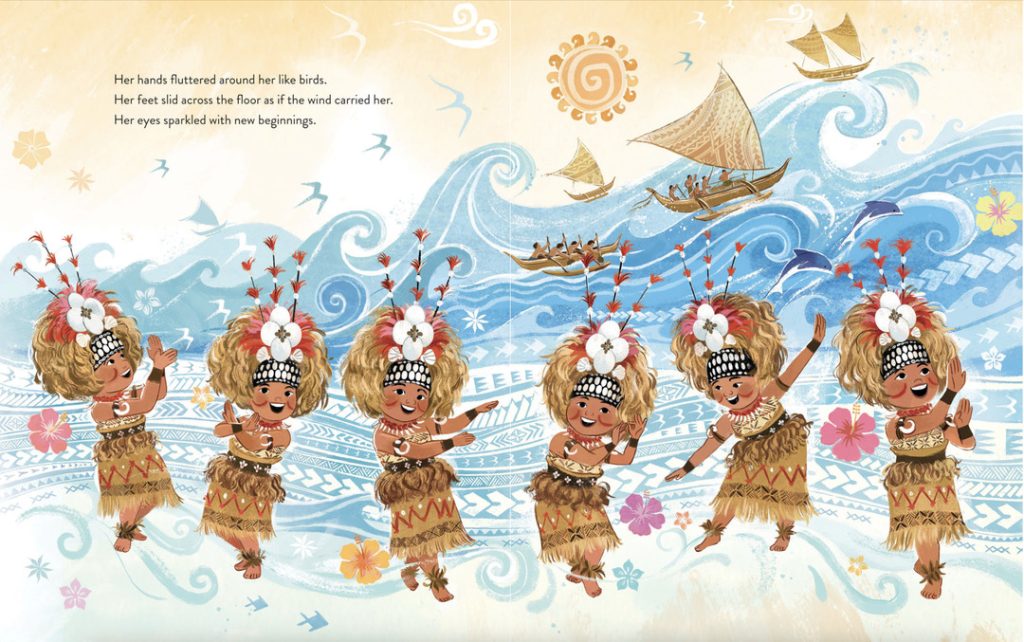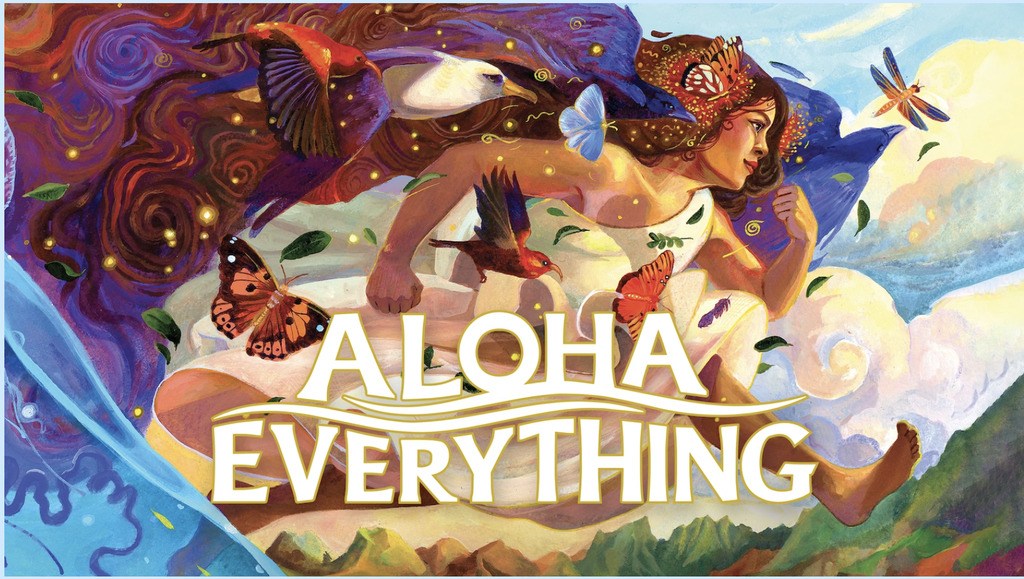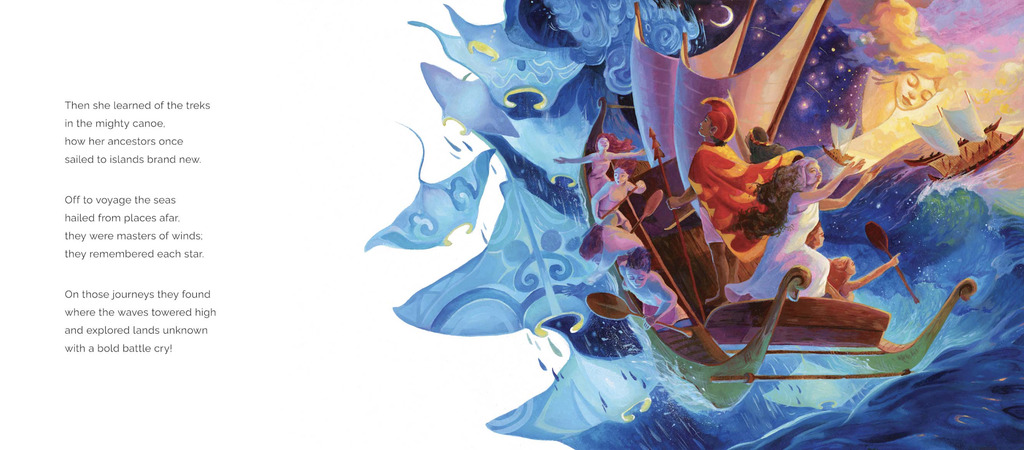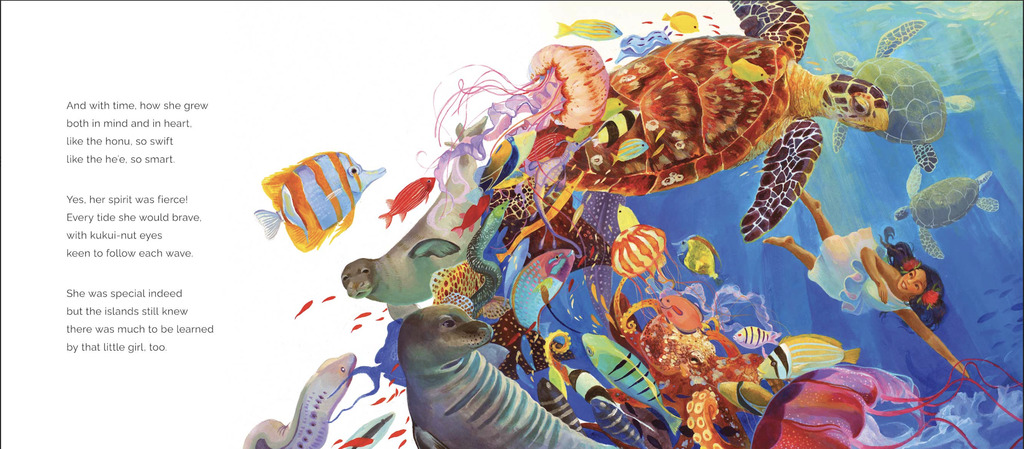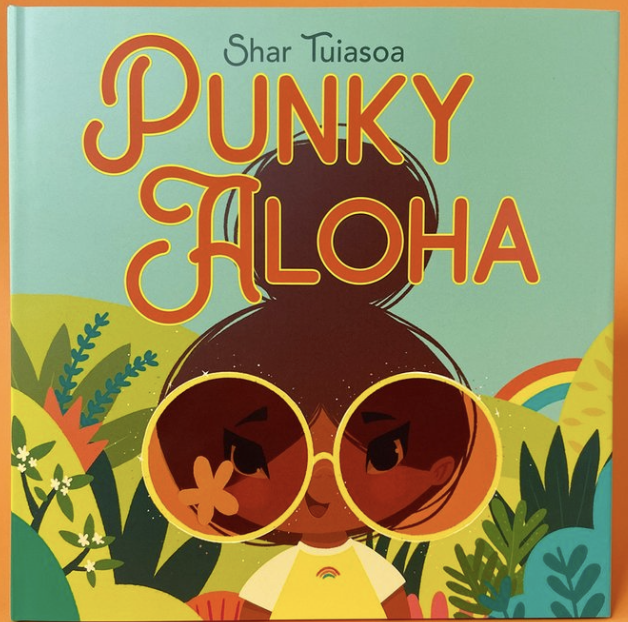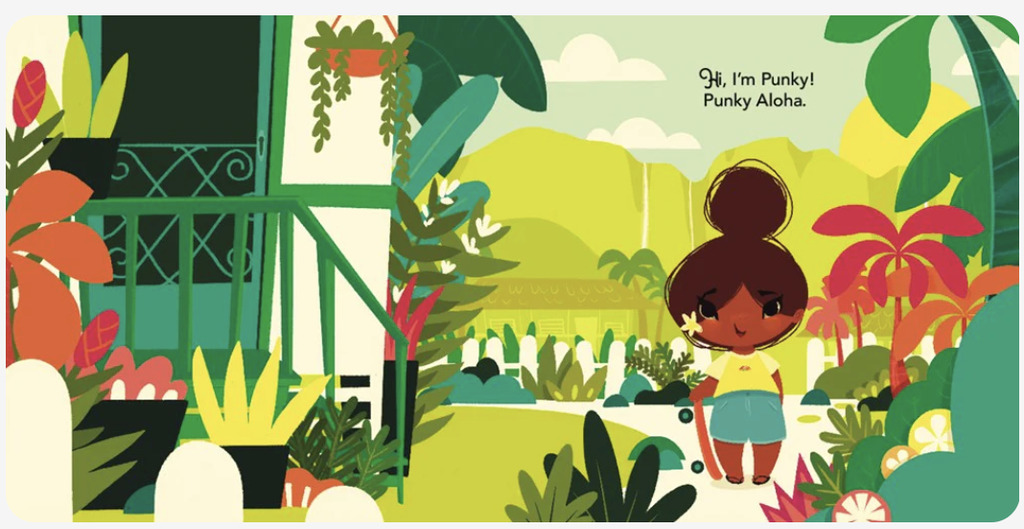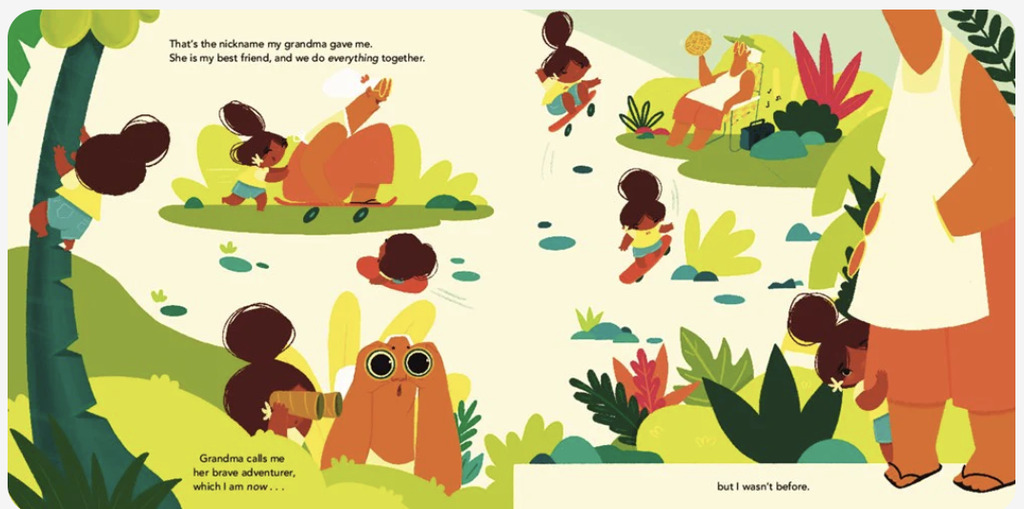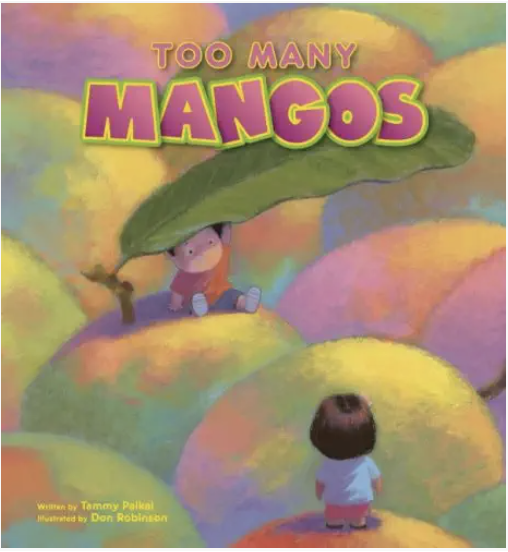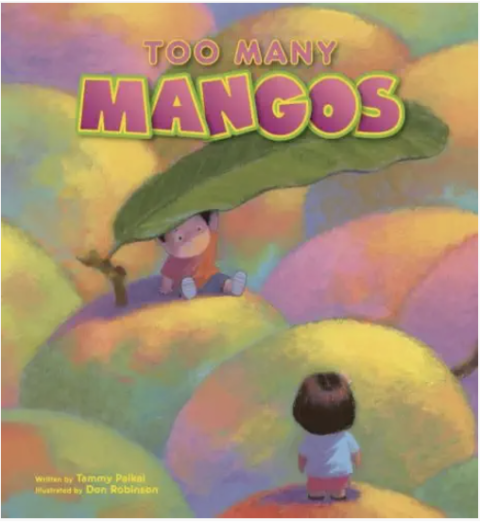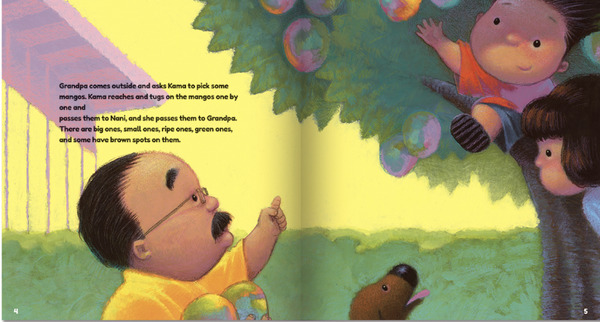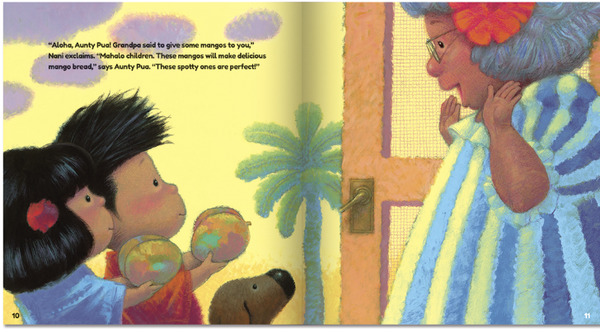Book Review
You are Invited to Our Book Launch at Native Books in Honolulu on February 8
You are cordially invited to the official book launch of Kaho’olawe: The True Story of an Island and Her People
at Native Books (1164 Nuʻuanu Avenue, Chinatown Historic Arts District)
on Saturday, February 8, 2025, from 11 am — 1 pm
Harinani Orme, the book’s wonderful illustrator, and I plan to share about the book’s journey to publication in a relaxed, talk story-type format.
Maile Meyer and the good folks Native Books have graciously offered to donate a portion of the proceeds of books sold during the event to the Protect Kahoʻolawe ʻOhana. Mahalo nui!
We look forward to talking story with you at there!
Kahoʻolawe: The True Story of an Island and Her People
Written by Kamalani Hurley, illustrated by Harinani Orme
Millbrook/Lerner (Feb 4, 2025)
ISBN 979–8765605011
Suggested for ages 7 — 11, grades 2 — 5
100% of the authorʻs proceeds will be donated to the Protect Kahoʻolawe ʻOhana
Flier created by Native Books. Photo credits: Harinani Orme and Rokki Midro
Interview with Native Hawaiian Illustrator Malia Pila
I like to think I’m a wordsmith. I can often take an idea and work to find the best words to tell a story I hope my young readers will love.
I hope my young readers will love.
But a children’s book is way more than words. Beautiful illustrations are key to making well-written stories and turning them into visual magic for young readers.
Talented Native Hawaiian illustrator Malia Pila is one such magician. Her charming, gorgeous images have a cinematic aesthetic that young readers and their grownups love.
We are so pleased to talk story with Malia today.
Aloha e Malia! For those who haven’t met you, could you please tell us a little about yourself?
My name is Malia Pila, and I’m an illustrator working primarily in picture books these days, but I have also worked in visual development for animation! I enjoy exploring different media and styles with my artwork whenever I can as well as researching niche things like historical costuming and the mythology of different cultures.
My biggest supporter for nearly 15 years now has been my (soon-to-be) husband. My career path has not been very clear or linear and even when I’ve had moments of self-doubt, he has always been at my side to help me back onto my feet and find inspiration again.
Congratulations on your engagement! Where did you grow up?
I grew up in a handful of different places. A large part of my childhood was spent between Hilo where my father is from and Kona, but we eventually moved to the mainland, and I spent my teen years in places like Florida and Arkansas.
What has been your journey to becoming a professional illustrator? Why did you become an illustrator/artist? Have you always wanted to create art?
I have always had a desire to create art, but it took some time to land specifically on “professional illustrator.” My older sister introduced me to drawing when I was about 6, and while I’m sure I drew plenty before then, I specifically remember her introduction having a profound impact on me and igniting a spark that has just refused to die down since.
I’ve been lucky that my family has never put down my dreams or insisted I pivot to something else completely. So by the time I made it to university, I had refined an incredibly vague career plan of “ARTIST” into a more specific goal to work in the animation industry. I stuck with that ultimately, but I also found myself exposed to new things that really began to turn my head like illustrating for picture books and studying art history.
After university, I was left in a place I think a lot of fresh graduates are in after art school. There is so much uncertainty in many creative industries, so it can be overwhelming. I’ve tried to just focus on what makes me happy to create and that has really led me to where I am now.
What kinds of illustration work have you done? What do you enjoy most about illustrating, especially for a young audience? What are some of your greatest challenges?
I enjoy illustrating for the sheer enjoyment of creating, to be honest. It is so fun to think of something that perhaps no one has ever thought of before or, alternatively, what many many people have thought of in very different ways, and see it put down on paper or canvas. When it comes to illustrating for a young audience specifically, what I love about it is trying to inspire the same thoughts and feelings I once had as a child looking at artwork in books or rummaging through different covers at the library.
That itself sort of becomes my greatest challenge, too. I want to convey so much with my art sometimes that I have to sit back and pick what to include so as not to overwhelm an individual illustration or muddy a concept and message.
Do you have a favorite medium to work with? Why is that?
I recently picked up gouache painting again, and while I’m still refamiliarizing myself with the medium, I’d say it is becoming a new favorite. For the most part, I’ve worked primarily digitally as an illustrator until recently, and while I love all that digital work offers in the way of flexibility and ease, I really enjoy getting my hands back on something more tactile and messy like paints.
Can you share a bit about what you’re working on now? What’s your inspiration?
Something that has always inspired me is my childhood growing up in Hawaiʻi. I have such fond memories of sitting on my grandpa’s lanai eating manapua, gawking at tide pools, and playing with sleeping grass as a kid. On the flip side, leaving all of that and moving to the mainland was incredibly difficult for me. I’m just starting out with the idea, but I’m hoping to play with it a little and see if these inspirations can come together as either a series of illustrations to speak on these experiences or, who knows, maybe even a picture book!
That sounds so fun! What are your hopes and dreams for the year and beyond in terms of your career and what you do you hope for your career in the future?
I’m starting 2025 with a lot of hopes! I recently signed with an agent so I’m looking forward to debuting on new books and other projects in the new year. My dream for the next year is to build a good foundation for myself as a professional illustrator and past that? I would love to explore the possibility of publishing a book as an author/illustrator myself. To be added alongside other published Pacific Islanders would be such a dream!
What advice would you give an aspiring illustrator?
It is okay to pivot. It is okay to take a break, too! I went through several years of my life when creating art was not a priority for me because I was dealing with some very difficult things. I felt bad about this for a while but honestly, a break was what I needed and I do not feel as if I irrevocably damaged my career by taking one as I eventually came back rested and reenergized and caught right back up to my peers. Sometimes taking a chance to sit back and take in other media can be so helpful when you’ve been creating endlessly for a while and feel burnt out.
What kinds of books do you enjoy reading? Any favorites?
I read a lot of historical fiction and some of my favorite books tend to fall into that category. 2024 was unfortunately a slow reading year for me but one of my favorites that I finished was The God of Endings by Jacqueline Holland.
I’m hoping to read so much more in 2025. Specifically, I want to focus on reading more books by other Pacific Islanders. In the past, I’ve found it a little difficult to track down titles but thanks to resources like Pacific Islanders in Publishing, I have a growing reading list to work through.
What’s your online presence?
My portfolio website is maliapila.com. I’m a little more active these days on Instagram (or I try to be, anyway) and can be found there at maliapila.art. I welcome anyone that wants to chat or connect!
Mahalo nui, Malia, for talking story with us! We’re looking forward to hearing more from you soon! To learn more about Malia and see her wonderful illustrations, visit her website, Malia Pila.com, and follow her on Istagram at maliapila.art. Malia is represented by James McGowan at BookEnds Literary Agency.
Images courtesy of Malia Pila.
Book Review: Lei and the Invisible Island by Malia Maunakea
Native Hawaiian author Malia Maunakea has done it again with book #2 in her Lei and the Legends series for middle graders. Her newest book, Lei and the Invisible Island, takes Lei and the gang on a sometimes wild, sometimes scary, but always fun and satisfying adventure.
Lei and the Invisible Island begins where Lei and the Fire Goddess leaves off. Just when it seems that Kaipo, her best friend and ʻaumakua, is safe, his pendant goes missing. Now the race is on to save Kaipo from oblivion.
The ever-resourceful Lei gathers her friends and takes the reader on an adventure that is ultimately indigenous at its roots. Yet today’s reader will find the story accessible because of its fresh, modern take on traditional legends.
All of the characters — Kaipo, ʻIlikea, Tūtū, new character Kaukahi — are very well developed, but I especially love the character of Lei, who is totally likable as the hero the story. Lei is relatable because she isn’t perfect. She is a fully fleshed out protagonist, a strong and creative leader who must deal with doubts and difficult decisions. It is clear that Lei has a heart and courage and is thoroughly invested to meet the dangerous task at hand.
I really like that story appeals to young readers in the respect they are shown. The book deftly carries the underlying message of hope and forgiveness that the reader comes to naturally in a fun and scary way that middle grader readers love.
The authenticity in Malia Maunakea’s voice shines through. I love her local and kanaka ʻoiwi references which are woven like a lei haku throughout the book. The use of ʻōlelo Hawaiʻi is truly wonderful, and Tūtū’s pidgin is spot on.
Malia Maunakeaʻs website includes a very cool pronunciation guide (yes, that’s her voice on the audio clips) to the Hawaiian words used in the book.
Lei and the Invisible Island is a Native Hawaiian story with universal themes all readers will love. This book and book #1 Lei and the Fire Goddess are fun and exciting stories and terrific introductions to the Native Hawaiian culture. They deserve space on every middle grader’s bookshelf.
You can learn more about the author in our interview with Malia Maunkea and our review of Lei and the Fire Goddess.
Lei and the Invisible Island
By Malia Maunakea
Penguin Workshop, 2024
ISBN 978–0593522059Recommended for ages 8 — 12
Please read our disclaimer to learn our book review policy. Mahalo!
Review copy and image courtesy of Malia Maunakea
Book Review: Tala Learns to Siva
There’s something magical about children’s books written by Native Hawaiian and Pacific Island authors.
Until recently, stories about our communities told by our people were largely missing in children’s literature. Thankfully, the times are changing, and more voices are emerging to tell our own stories. The best of these narratives sing with heart and authenticity that comes from being rooted in the community.
Tala Learns to Siva is one of those stories. This delightful Pacific Island story by talented author Kealani Netane deserves a space not just on a child’s bookshelf but on school library shelves everywhere.
Young Tala watches her Aunty Siva perform the traditional Samoan taualuga. Captivated by her aunt’s grace and beauty, Tala asks her to teach her to dance in time for her grandmother’s birthday party. But as with most things worth learning, what at first seems easy actually takes work and practice. Will Tala learn to dance in time to share her siva with her grandmother? She decides to do her best.
Like all good stories for children, Tala Learns to Siva resonates with young readers everywhere. They will easily relate to the universal story of the young protagonist’s determination to overcome her doubts and fears. Tala practices everywhere she goes and works hard to master the hand and foot movements. But it’s when Tala understands that the dance connects her to her ancestors that she truly begins to shine.
The illustrations by New York Times bestselling illustrator Dung Ho are colorful and vibrant. The art beautifully invites the reader to become a part of Tala’s island family.
Two spreads are my particular favorites. I love the dance spread on pages 20–21. Both text and art do a wonderful job of capturing Tala’s joy and triumph as she dances the taualuga solo for her family and friends.
And I especially adore the family’s reaction to Tala’s solo on page 22. Growing up in Hawai’i, I’ve attended many Samoan parties and celebrations, and they often end just as page 22 so effectively shows, with elders and others joining in on the fun. This page is my very favorite, I think, because it speaks to me personally, because these folks could be my own friends and neighbors. And isn’t being able to relate to a character or to a piece of art what makes a book special?
The back matter includes a glossary of terms and an author’s note. In it Kealani expresses her love for Samoan dance and traditions that she gratefully passes on to her children.
Tala Learns to Siva is a wonderful introduction to Pacific Island culture and a most worthy addition to any bookshelf.
Tala Learns to Siva
Written by Kealani Netane, illustrated by Dung Ho
Orchard Books, an imprint of Scholastic Books, 2024
ISBN 978–1338859317
Suggested for ages 4 — 8
Meet author Kealani Netane in our talk story interview!
Please read our disclaimer to learn our book review policy. Mahalo!
Galley review copy and images courtesy of Kealani Netane.
Publisher’s Weekly Sneak Peak: Kaho’olawe Picture Book!
I’ve missed you, my reading and writing friends! It’s been a little while since my last blog post, but that’s because I’ve been working on a couple of manuscripts. As Stephen King once said, When you’re writing, the book is boss. No kidding.
My debut picture book, Kaho’olawe: The True Story of An Island and Her People (illustrated by Harinani Orme) is scheduled for Spring 2025. And look what I found in Publisher’s Weekly Spring 2025 Children’s Sneak Peak issue!
Woohoo!
It’s been two-years from idea to almost publication, and I can’t wait to share this book as well as my other projects with you!
Mahalo to Michael Nahoʻopiʻi of the Kahoʻolawe Island Reserve Commission and especially Davianna McGregor of the Protect Kahooolawe ‘Ohana for their generosity and encouragement.
More soon!
Book Review: I See Color, by Valerie Bolling and Kailei Pew
Author Valerie Bollingʻs picture books are always great choices for kids. Her colorful, lyrical early readers and picture books focus on the simple joys and triumphs of childhood.
Her first non-fiction picture book is a collection of biographical sketches, I See Color: An Affirmation and Celebration of Our Diverse World. Featured are leaders, many little-known to today’s kids, who have made profound impacts on the world. The collection’s short, engaging format makes it the perfect introduction of short biographies to children.
I am delighted that our own Native Hawaiian activist and scholar, the late Dr. Haunani-Kay Trask, is one of the featured unsung heroes! Haunani is presented in a lovely a two-page spread: a concise yet thoughtful passage highlighting her key contributions accompanied by a beautiful illustration.
The passage has all the hallmarks of author Bolling’s wonderful books with lyrical, approachable language, and the artwork is gorgeous. Most of all, I love that I See Color can become a jumping off point for kids everywhere to discover more about the people featured but especially about Haunani-Kay Trask and her fierce aloha for our lāhui.
This beautifully illustrated picture book is the ideal gateway for kids to learn about the people of color who continue to make a difference in our lives.
I See Color: An Affirmation and Celebration of our Diverse World
Written by Valerie Bolling and Kailei Pew, illustrated by Laylie Frazier
HarperCollins, 2024
ISBN 978–0063234260
Suggested for ages 4 — 8
Please read our disclaimer to learn our book review policy. Mahalo!
Review copy and image courtesy of Valerie Bolling.
Book Review: Aloha Everything
You know me. I LOVE books, art, and films that focus on the Native Hawaiian community and our Pacific Island cousins. I love them so much that my blog focuses on interviewing these amazing creators. As native peoples, our voices have traditionally been underrepresented. Thankfully, this is changing, with books by Native Hawaiian/Polynesian authors including Gabby Ahuli’i, Tammy Paikai, Malia Maunakea, Shar Tuiʻasoa, Brook Parker, and now, Kaylin Melia George, entering the market.
Aloha Everything is a beautiful, sweeping introduction to Hawaiian culture and history, especially helpful for those unfamiliar with the Native Hawaiian people.
The debut picture book by Native Hawaiian author Kaylin Melia George and illustrated by Hawaii-based artist Mae Waite, Aloha Everything is written in rhyme, an effective story-telling technique for reaching young readers and their grown-ups.
The spreads read like dream sequences full of authentic Hawaiian imagery. The book moves quickly, touching on the many traditions that are important to the Hawaiian people.
The phrase “What did hula teach her?” is repeated three times in the book, and although the book is not actually about hula, the refrain is an effective device that helps organize the global topics to make them easier for young readers to grasp.
The back matter provides a pronunciation guide and glossary in addition to biographies of both author and illustrator. I love lots of back matter in picture books, and included enrichment materials will be welcomed by schools, hālau, and other readers.
Aloha Everything is one of the most beautiful picture books I’ve ever seen. At the risk of sounding over the top, the illustrations are staggeringly beautiful. More than supporting the text, the art does its own storytelling. Like all great illustrations in children’s literature, they are key to understanding and appreciating the culture and history explained in the book.
Artist Mae Waite is a wonder. Her vibrant, magical artwork leaps off the page. I love all of the illustrations, but my favorite accompanies the first “What did hula teach her?” refrain. In it, the girl is in a hula pose, as to say mahalo to the gods and the ʻāina: arms stretched before her, eyes closed, her long dark hair swirling all around in hues of purple and lavender. Gorgeous.
Each spread is richly layered, a riot not just of color but of images. You know how some picture books contain pretty but forgettable illustrations that you don’t really stop to look at? Not so with Aloha Everything. With Ms. Waite’s art, I found myself slowing down to examine the tiny details that make up the composition as a whole.
More than just pretty, the illustrations are the perfect jumping off point for discussions. I can imagine a class using an illustration as a starting point to explore Hawaiian culture, such as the concept of aloha in the title, the myth of the demigod Maui lassoing the sun, the process of traditional kapa making, and the various flora and fauna of Hawaiian forests.
As much as I love the imagery, I felt interactions the girl might’ve had with ʻohana, especially with her makua, were missing.
Overall, Aloha Everything is a beautiful introduction to Native Hawaiian culture and a worthy addition to any bookshelf.
Aloha Everything
Written by Kaylin Melia George, illustrated by Mae Waite
Mythify, 2023
ISBN 978–1636551128
Suggested for ages 5 — 8
Meet author Kaylin Melia George and illustrator Mae Waite in our talk story interviews.
Please read our disclaimer to learn our book review policy. Mahalo!
Galley review copy and images courtesy of Kaylin Melia George.
Book Review: Punky Aloha, by Shar Tuiʻasoa
It’s a fact of the marketplace that many picture books with the unfortunate timing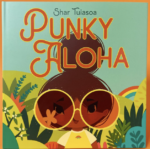 of being released during the COVID pandemic were often not given the attention they deserved.
of being released during the COVID pandemic were often not given the attention they deserved.
And that’s really too bad, because they merit space on our bookshelves.
Punky Aloha, the debut picture book by talented author/illustrator Shar Tuiʻasoa, is one of these hidden gems. Released in mid-2020 during the height of the pandemic, Punky is just the kind of delightful story kids — and their grown-ups — will love.
We meet little Punky Aloha with her best friend, her grandmother. They love to go on all kinds of fun escapades together. Punky tell us that she wasn’t always the brave adventurer she is now.
It all began, Punky says, with a freshly baked loaft of grandma’s banana bread. Needing butter to slather on the top of the loaf, Grandma sends her to the nearby market to pick some up for her.
Feeling a bit fearful of going by herself (“If I go to the market, I’m sure to bump into someone new. And whenever I bump into someone, I start to feel shy,” Punky confesses), little Punky hesitates, until her grandmother gives her a pair of bright yellow “magical” sunglasses that will help her meet the task at hand.
Before Punky leaves, Grandma reminds Punky to show her aloha by being helpful, giving, and brave to all she meets.
And so Punky’s big adventure begins. Using her wits — and her aloha — Punky overcomes her shyness to help those she meets on the way to the market. At the end of the book, Punky and her grandma are rightly proud of herself, and she is rewarded with a big dose of confidence … and a thick slice of banana bread with melting butter.
I love this book. The intergenerational story is charming. The interaction between Punky and her grandma is warm and sweet.
Ultimately, Punky Aloha resonates with kids. They don’t have to be Polynesian girls to see themselves in her, a kind, caring, adventurous character.
And did I mention that the book is gorgeous? Featuring Shar’s trademark tropical colors, the illustrations are vibrant greens, reds, oranges, yellows, and blues. Punky herself is adorable with her messy chignon (a wonderful “tita bun”), slippers, and skateboard. Each spread is so beautiful that I bought a second copy of the book just so I tear the pages out and frame them to decorate the bedroom of my own little Punky Aloha, my five year old granddaughter.
I wish Shar’s publisher had encouraged her to provides enrichment activities around Punky Aloha. The book easily suggests opportunities for those seeking storytelling from diverse and underrepresented voices, including classroom activities around the meaning of aloha. Teachers, librarians, and families can incorporate the book’s theme of social and emotional learning as Punky demonstrates skills that all kids need to meet challenges.
For so many reasons, Punky Aloha is a must read.
Punky Aloha
Written and illustrated by Shar Tuiʻasoa
HarperCollins, 2020
ISBN 978–006379236
Suggested for ages 4 — 8
Meet author/illustrator Shar Tuiʻasoa in our talk-story interview. Punky Aloha and all of Sharʻs gorgeous collectible illustrations and prints are available at Punky Aloha Studio.
Images from Brown Baby Books. Please read our disclaimer to learn our book review policy. Mahalo!
Book Review: Too Many Mangoes, by Tammy Paikai
Some picture books are classics. They tell timeless tales that teach us about the world and our place in it.
One such classic also happens to be one of the first Native Hawaiian-themed books written in an authentic voice. Too Many Mangoes by Tammy Paikai is a story based on the author’s childhood experience.
This gentle story is about two Hawaiian kids, Kama and Nani, who love to climb the mango tree at their grandpaʻs house. One day grandpa asks them to pick some mangoes, but when he realizes that the kids have picked way too many for their family to eat, he instructs them to give the mangoes away to their neighbors.
Thus the adventure begins. We are introduced to a delightful community of generous and kind neighbors. The kids go to each house to share the mangoes and, in return, are given wonderful treats — baked goods, fruit, jam, even an orchid plant — that the book calls “mahalo gifts.” The last spread is at the table where grandpa and the grandkids are happily feasting on their unexpected bounty.
What I love most about this book is the Native Hawaiian lessons of sharing without expectation of anything in return and in being happy with what nature gives you. Kids can be picky eaters, and this story shows then that delicious produce doesn’t have to be blemish-free: mangoes donʻt have to be perfect to be, well, perfect. As the neighbors explain, overripe mango can be sprinkled with sweet-and-salty li hing powder or made into pickles or bread. I was delighted to find that my favorite way to eat slightly underripe mango — with a thin marinade of shoyu, vinegar and chili pepper water — was featured in the book.
Too Many Mangoes offers many enrichment opportunities and has been adapted by teachers, librarians and parents in curriculum for first graders, including math, food and backyard agriculture, and culture and diversity. The book has been adapted into classroom plays and reader theaters and community read-aloud events.
The illustrations, by popular local Hawaiʻi illustrator Don Robinson, are gorgeous, with muted tropical vibes youʻd expect from a children’s book about Hawaiʻi.
Some book reviewers have made an issue about so-called grammar errors. I found just one spread toward the end of the book where the tense shifts from the present to the past then back to the present. More a stylistic hiccup than a grammar mistake, the shift in tense is minor and does not detract from the story.
Perhaps the best vindication is that Too Many Mangoes was a featured title by the Harvard University Graduate School of Education. Dr. Sarah Dryden-Peterson described the Books of Belonging program “where we find big, hard questions about the world packaged with love between the covers of a book.”
And that describes Too Many Mangoes perfectly.
Too Many Mangoes, A Story about Sharing
Written by Tammy Paikai. Illustrated by Don Robinson
Island Heritage Publishing, 2009
ISBN 1–59700-758–7
Suggested for ages 2–6
Meet author Tammy Paikai in our talk-story interview and discover her other Hawaii-themed picture books. Too Many Mangoes is available at Native Books Hawaiʻi and at your favorite online booksellers.
Images from Welcome to the Islands. Please read our disclaimer to learn our book review policy. Mahalo!



